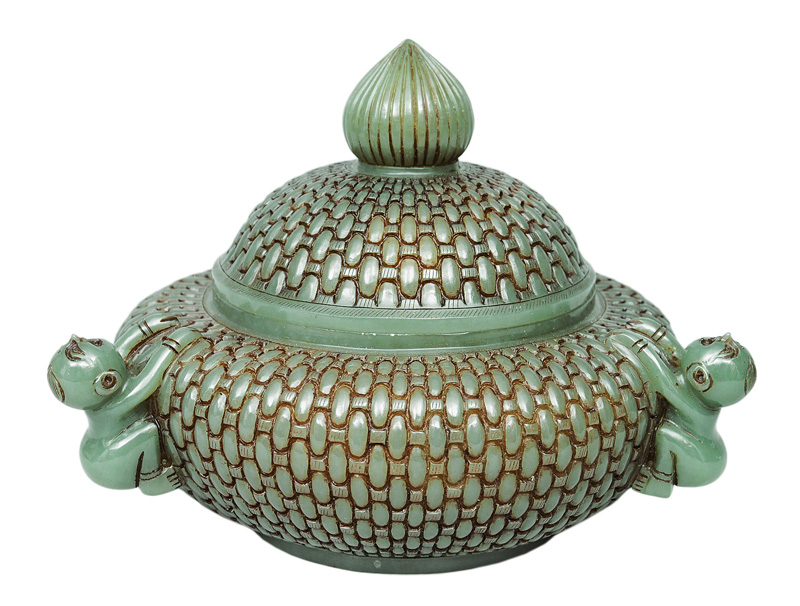A fine celadon-jade basket with cover

Lot-No. 997
China, Qing-dynasty (1644-1911). Light green jade artistically carved. Bellied jar with domed cover and errected pin. The surface with basket-weave relief. At the rim 3 climbing boys. H. 13,5 cm. - Jade vessels with plastical handles became popular in the Song-dynasty. The Qing-dynasty loved to combine these handles with floral carvings or naturalistic patterns. Compare a brush washer in the Palace Museum, Beijing, dated into the Mid-Qing period. See: Yang Boda [ed.], Chinese Jades Throughout the Ages, Qing Dynasty, Hong Kong 1997, p. 130f. The basket weave design was very popular among the Imperial Court in the 18th and early 19th cent. Its homophonous meaning is combined with the motif of the boys to a symbolic pun (wish for male heirs).
A fine celadon-jade basket with cover
A fine celadon-jade basket with cover
Lot-No. 997
China, Qing-dynasty (1644-1911). Light green jade artistically carved. Bellied jar with domed cover and errected pin. The surface with basket-weave relief. At the rim 3 climbing boys. H. 13,5 cm. - Jade vessels with plastical handles became popular in the Song-dynasty. The Qing-dynasty loved to combine these handles with floral carvings or naturalistic patterns. Compare a brush washer in the Palace Museum, Beijing, dated into the Mid-Qing period. See: Yang Boda [ed.], Chinese Jades Throughout the Ages, Qing Dynasty, Hong Kong 1997, p. 130f. The basket weave design was very popular among the Imperial Court in the 18th and early 19th cent. Its homophonous meaning is combined with the motif of the boys to a symbolic pun (wish for male heirs).


